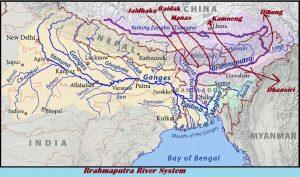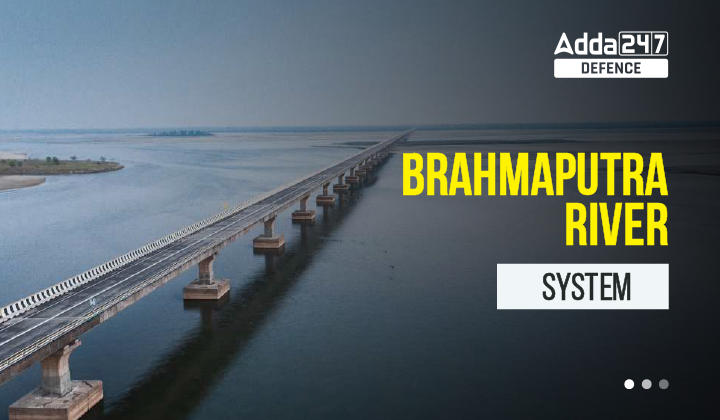Brahmaputra River System
The Brahmaputra River System is one of the most important and largest river systems in the world. The system originates from the Himalayas and flows through several states in India and Bangladesh before emptying into the Bay of Bengal. It is a crucial lifeline for the people living in the region and plays a vital role in their daily lives.
Brahmaputra River System Origin
The Brahmaputra River System originates from the Chemayungdung glacier of the Himalayas in Tibet, near Lake Mansarovar. The river then flows eastward through Tibet, China, India, and Bangladesh before emptying into the Bay of Bengal. It covers a total distance of 2,900 km, and its basin area is about 651,334 square km.
States through which the Brahmaputra River System flows: The Brahmaputra River System flows through several states in India, including Arunachal Pradesh, Assam, and Meghalaya. In Bangladesh, the river is known as the Jamuna and merges with the Ganges and the Meghna rivers before emptying into the Bay of Bengal.
Brahmaputra River System Tributaries
The Brahmaputra River System has several major tributaries that merge into the main river. These tributaries play an essential role in maintaining the flow of the Brahmaputra River System. Some of the significant tributaries of the Brahmaputra River System include the Dibang River, the Lohit River, the Subansiri River, the Kameng River, the Manas River, and the Sankosh River.
The Dibang River is the largest tributary of the Brahmaputra River System and originates from the Mishmi Hills in Arunachal Pradesh. The Lohit River is another significant tributary that originates from the eastern part of Tibet. The Subansiri River is the third-largest tributary of the Brahmaputra River System and originates from the Tsona Dzong glacier in Tibet.
The Kameng River originates in the Tawang district of Arunachal Pradesh and is also known as the Jia Bhoreli in Assam. The Manas River is a transboundary river that originates in Bhutan and flows through the Manas National Park in Assam. The Sankosh River is another major tributary of the Brahmaputra River System that originates from Bhutan.
Brahmaputra River System Map
A map of the Brahmaputra River System shows the entire course of the river system, including its origin, tributaries, and the states through which it flows. The map also shows the surrounding areas and the major cities and towns located along the river system.

In conclusion, the Brahmaputra River System is an essential lifeline for the people living in the region. It plays a crucial role in agriculture, transportation, and the overall economy of the region. Understanding the origin states through which it flows, major tributaries and a map of the Brahmaputra River System is crucial in ensuring its proper management and conservation.
Also Check:



 List of All Important Inventions and The...
List of All Important Inventions and The...
 Headquarters and Commands of Indian Arme...
Headquarters and Commands of Indian Arme...
 List of the Indian Cities Situated on Ri...
List of the Indian Cities Situated on Ri...
